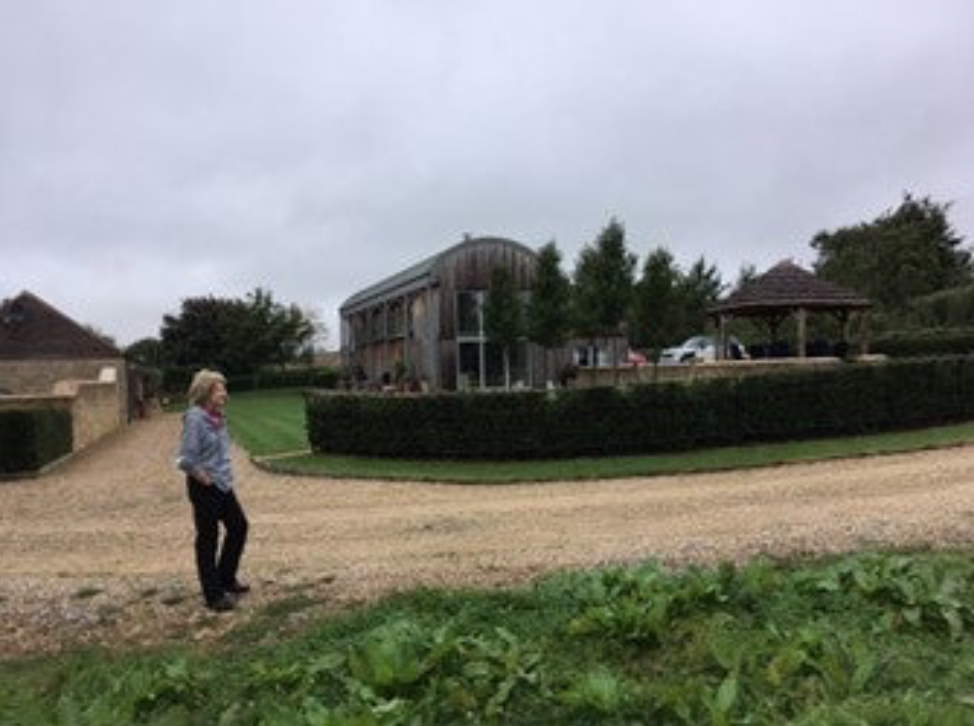
How we created a tranquil garden from boggy Cotswold farmland
SEO Space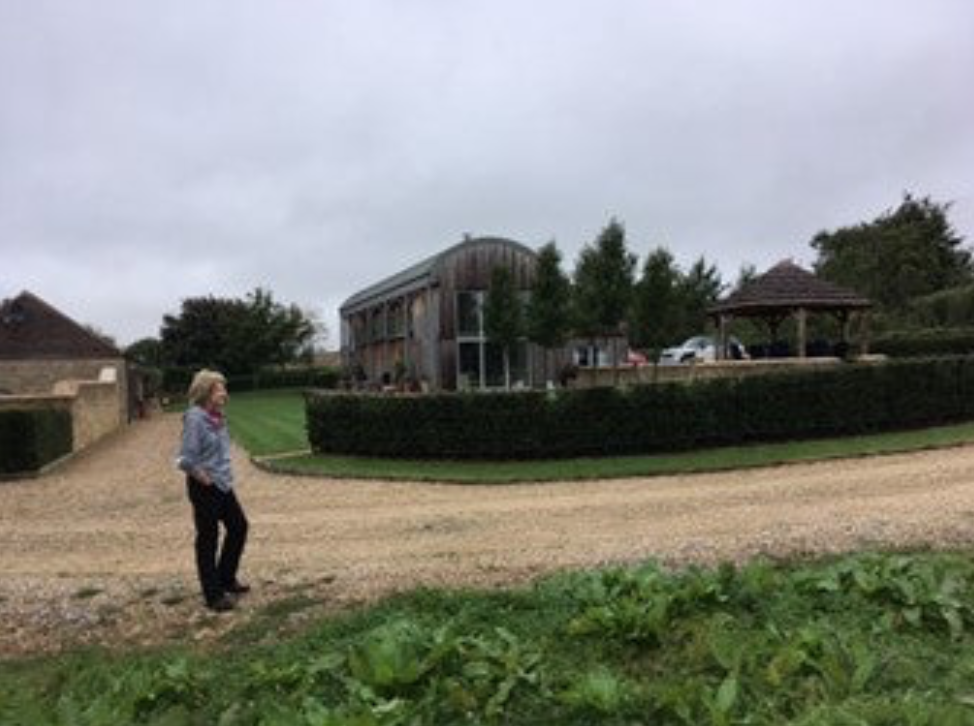
The Dutch Barn the year we moved in showing the one existing area of lawn (the lower end too boggy to walk on most of the time) and the rough agricultural land that comprised the rest of our garden.
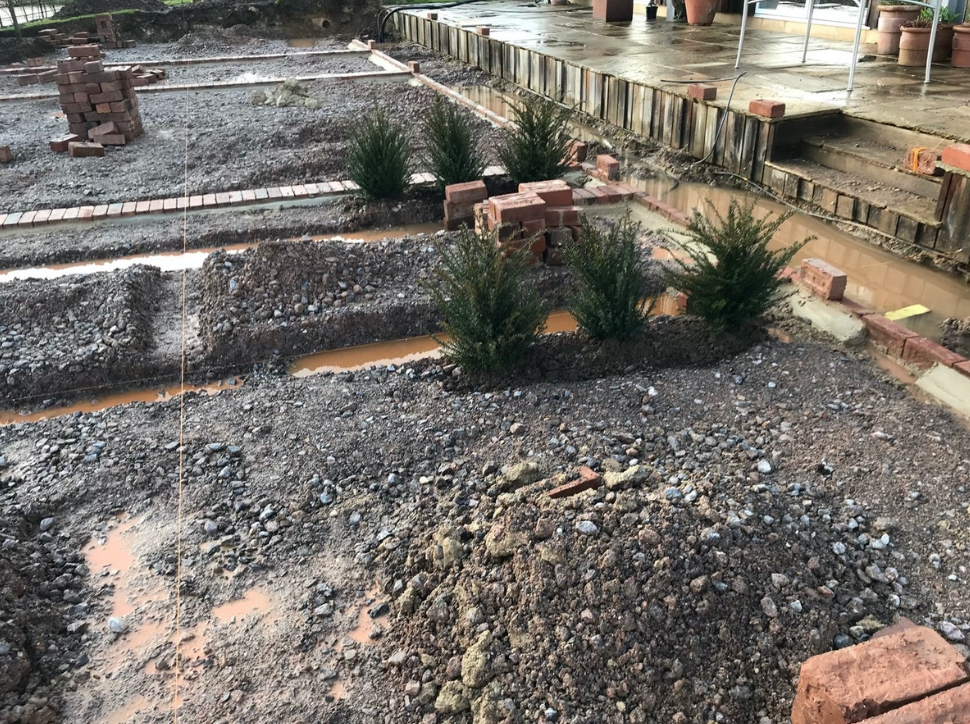
The courtyard garden takes shape – we realised almost immediately that the yew hedges could not be put straight into the ground.
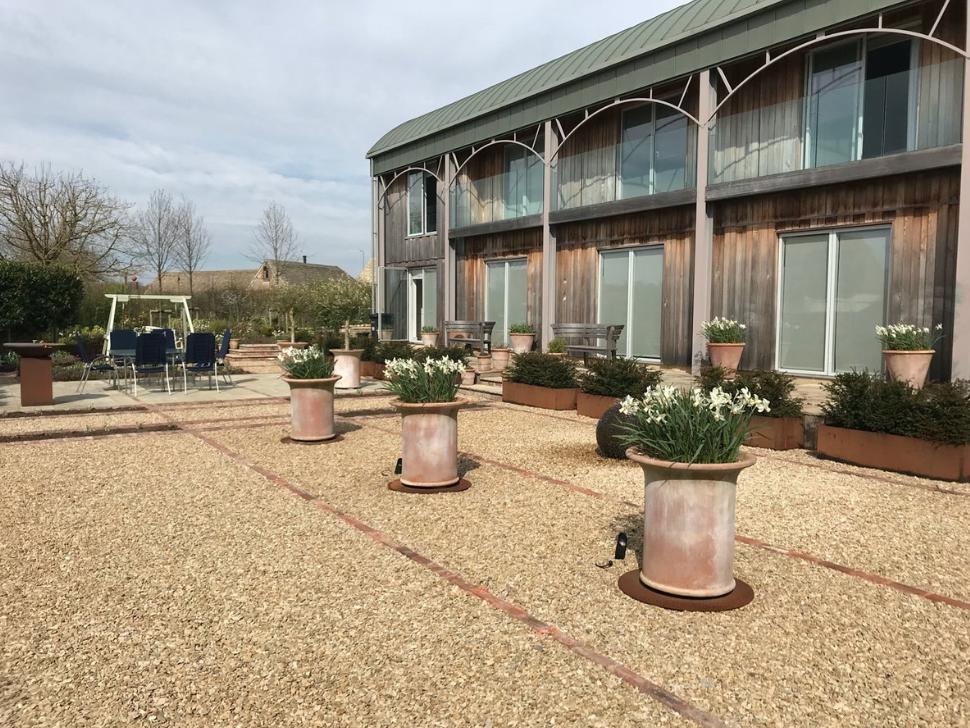
Italian Terrace pots in the courtyard garden.
Bob and I spend a lot of our time thinking about other people’s gardens; how our products can contribute to the design; how they can support and nurture treasured plants; how we can help people realise their visions for creating a beautiful sanctuary to enjoy. Once restrictions lift we hope that, once again, we shall be able to walk around our customers’ gardens when making deliveries and see for ourselves the time and passion that goes into every one we visit.
But our company, Muntons Traditional Plant Supports, was born from our own garden; or rather, a frustration in our garden. We were quite simply unable to find the right plant supports for it. And so we set about making our own, and used our garden and our plants to help us design, develop and test those supports. We still do. You could say that our garden has always been the quiet hero of our business’s story.
We thought, therefore, that it would be nice to share the garden’s story with you, as it’s been on quite a journey! We hope you will enjoy this glimpse behind the scenes…
In 2017, we moved from a large, established garden to a recently-converted Dutch barn that had been part of a traditional Cotswold farm and is still surrounded by agricultural land and stables. Our move was driven by a wish for a more rural life and a place where we could expand our rapidly growing business.
At our new home in Gloucestershire, we inherited a boggy lawn and an area of rough agricultural land. The benefits were lots of space to make a yard for our plant supports; five brand new stables that we could use as storage and a properly equipped packing shed.
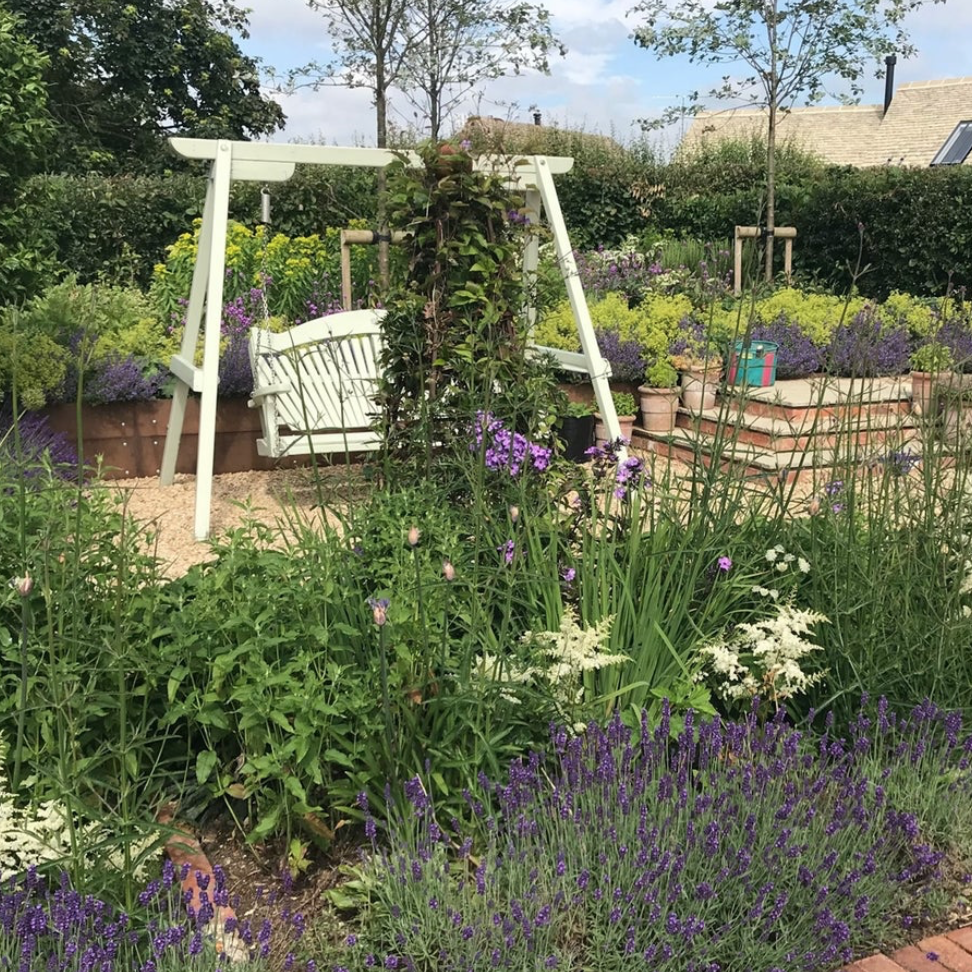
Looking across the herbaceous border whose focal point is an Abinger obelisk covered with clematis ‘The President’, past the swing seat, to the steel retaining wall and a billow of green and lavender beyond.
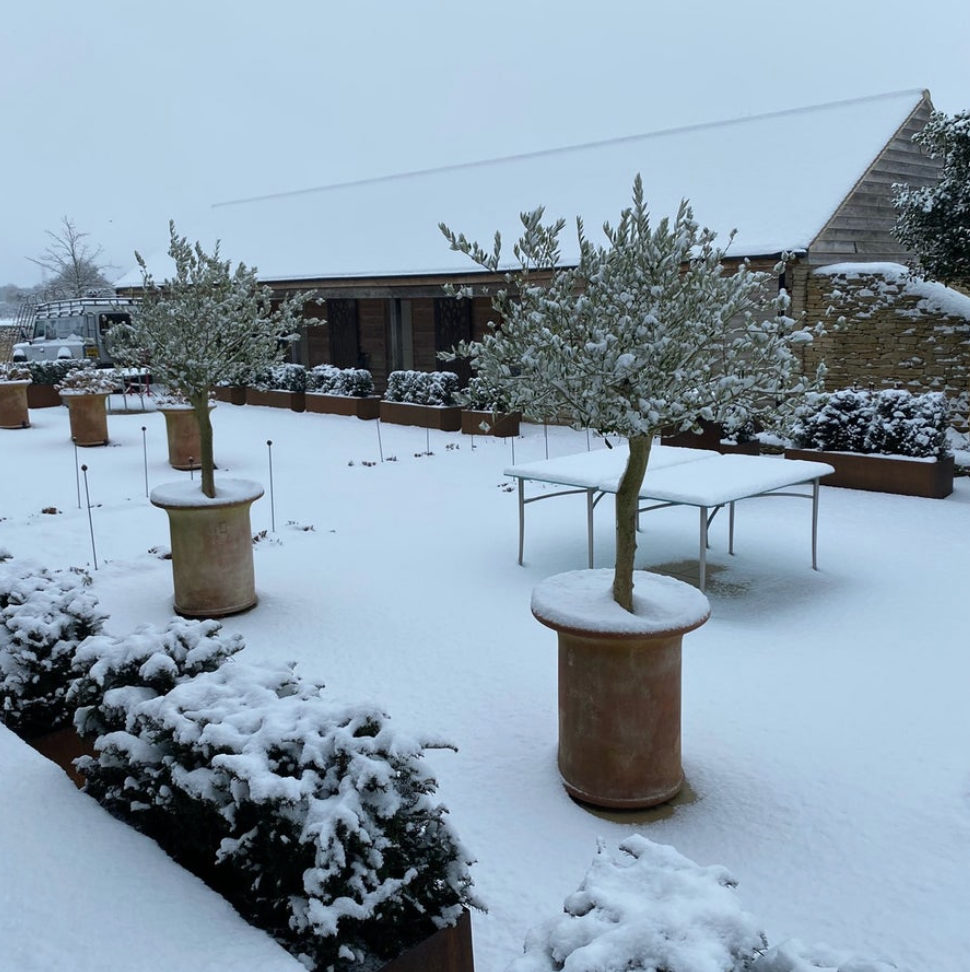
Even in winter, the strong structure of the courtyard gives it interest.

Planting out three varieties of bare rooted apples and training them onto our espalier trellis in January 2021.
I have gardened for many years and my ideas have been refined by the lessons learned looking at other gardens. I have also been lucky enough to know several skilful and very knowledgeable gardeners. A few of the things that guided the choices I made here at The Dutch Barn:
-
I wanted the garden to be a continuation of the house so a cottage garden or an Arts & Crafts garden seemed wrong for what is a contemporary building in a rural setting.
-
We enjoy entertaining and so a sheltered area where we could sit and relax with guests was the first essential. We decided that the lawn in front of the terrace would become a courtyard, with stone and gravelled areas broken up by lines of brick and small beds in the manner of a Mondrian painting.
-
The formality of the hard landscaping is softened by the planting but I decided early on that I would limit my colour palette and use a wide variety of greens to contrast with the steel and stone that we were using. To the greens I added colours in the burgundy/violet/blue range with creamy white as a highlight.
-
After many an impulse buy, I now plan what plants and containers I buy and where to put them. No more scooping up irresistible plants with no idea of where they will go. I buy in multiples and drift the same plant in 3’s or 5’s along the border; the few annuals I put in have to work for their place – cosmos and ammi majus are two which provide plentiful cut flowers as well as softening the perennial planting. It is entirely a matter of choice but I never buy mixed bulbs or seeds – I like to choose what I will get.
-
We planned the garden lighting (or at least the wiring) as we put in the structure of the garden – even with all our planning we are still retro-fitting uplighters where a tree or steps would benefit from a wash of light!
The first major job was to replace the boggy lawn with a meticulously planned courtyard garden – with low hedges dividing the areas and multi-stemmed amelanchiers planted through the gravel. Work began the following spring. We started by digging trenches for the yew hedges but were immediately forced to change our plans. Almost as we dug the trenches, they filled with water (a combination of heavy clay and being on a level with the water table – we live near the source of the Thames).
Most of the remainder of the land we ploughed and sowed with wildflower seed. It is now an established meadow with a circular mown path leading up to a central seat with lovely views down to the Thames which flows through the neighbouring meadow.
Looking back and documenting our garden in a journal makes me realise how busy we’ve been, and how much we’ve achieved. But of course, a garden is never truly ‘finished’, and despite all the work and having created a wonderful sanctuary to enjoy, there are always new projects and things to try. I have created a small raised garden for vegetables and cutting flowers in our own steel troughs in a more hidden part of the garden; hedges and dozens of trees have been planted; a cloud-pruned bed of lonicera nitida will be shaped this summer and, later in the year, we will be able to reveal our outdoor office/dining room where we are replacing rotting reed thatch with Cotswold tiles and planting a wind-break of espaliered apple trees on our new free-standing espalier trellis, underplanted with alliums, lavender, agapanthus, cosmos and, my signature plant, ammi majus which I have replanted everywhere from self-sown seedlings.
To sum up, we’re incredibly thankful for all that we have. Yes, our move to the Cotswolds has given us the opportunity to expand our product range and grow our company, but above all, it’s given us the peaceful rural garden that we so craved. And it’s been worth every ounce of effort that we’ve put into it. I think the past year has shown us all how beneficial gardens – sitting in and being truly present in them – are for our mental and physical health. We look forward to many more years developing and documenting ours.
Browse the complete range at www.muntons.net
Follow us on Pinterest for more advice and inspiration for your English country garden: www.pinterest.co.uk/plantsupports
Follow us on Instagram: www.instagram.com/muntons_plant_supports
Follow us on Facebook: Muntons Traditional Plant Supports
